NYC's Long-Awaited Davis Center Opens in Central Park
A stunning new facility at Harlem Meer opens to the public this weekend!


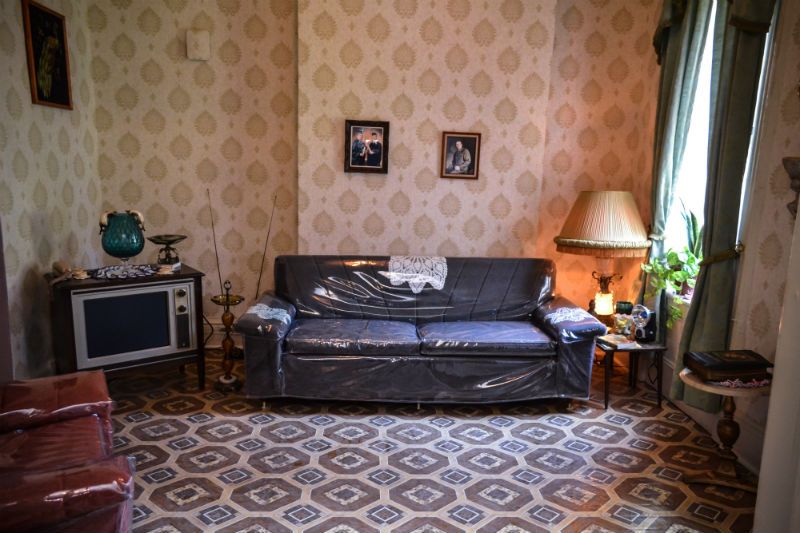
Photo courtesy of the Tenement Museum.
At the Tenement Museum’s new permanent exhibition, Under One Roof, the lives of three immigrant families intersect in a single building on the Lower East Side. Relying on the families’ memories who lived here during the 1950s and 1970s on 103 Orchard Street, Under One Roof is the only institution in the nation to weave together stories of Jewish holocaust survivors, Puerto Rican migrants, and Chinese immigrants together in a single, powerful exhibition
This is an exhibition of firsts for the Tenement Museum. It is the museum’s first time telling Modern era immigration stories and is the first exhibit to be built on the museum’s third floor. Also, for the very first time, furnishing curator Pamela Keech was able to use the actual photographs to aid in furnishing the recreated apartment, purchasing several of the items from Brooklyn Flea.
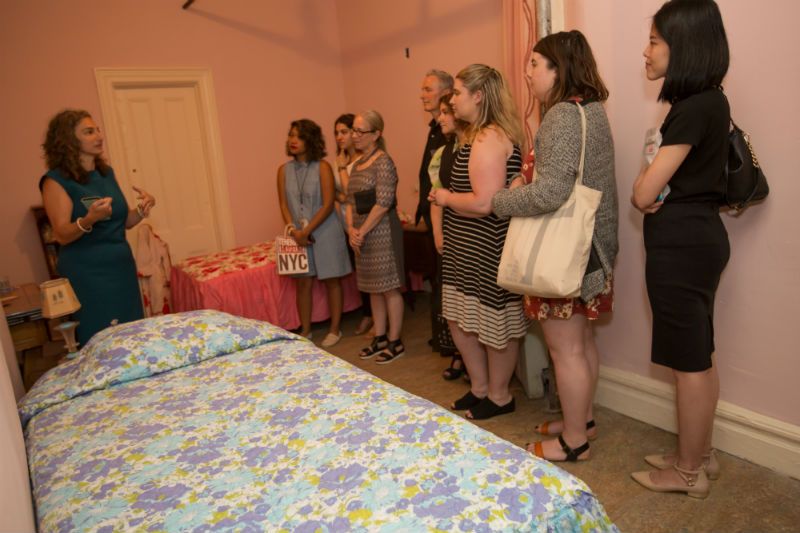
Visitors tour the “Under One Roof” exhibition. Photo courtesy of the Tenement Museum.
Kevin Jennings, President of the Tenement Museum, believes that discussing immigration is more important now than ever. “Under One Roof promises to foster a deeper understanding of how newcomers from all parts of the world make our country stronger and more dynamic,” he said.
Visitors start the 90-minute tour with the story of the Epstein family, headed by Kalman and Rivka, survivors of concentration camps who met in Frankfurt, Germany in 1945 at the Zeilsheim Displaced Persons Camp. President Harry S. Truman’s executive order that year allowed 23,000 displaced persons to enter the U.S., and the Epstein family did so in 1947, moving into their 103 Orchard Street apartment in 1956.
The dining room and a bedroom of the Epstein residence is recreated with a Jewish prayer scroll in the door frame (a sign of bravery for the family) and vivid blue walls (the color of “happy,” according to Rivka) showing how the family made this tenement their home.
The bedroom, featuring beds dressed in blue and pink floral comforters which visitors are allowed to sit on, illustrates the memories of the Epstein’s daughter Bella. Her desk holds youthful essentials— Crayola Crayons, Pixie Sticks, and a record player. Here, visitors can listen to Bella wistfully recall the Paul Anka song “Oh, Diana” which, she says “made [her] an American.”
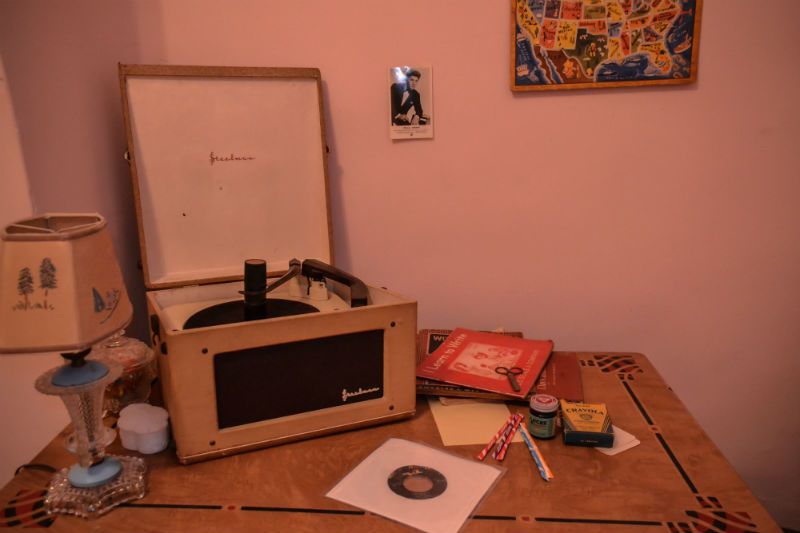
Recordings of Bella Epstein recalling her love for Paula Anka plays from her record player. Photo courtesy of The Tenement Museum.
Next, visitors hear the story of the Saez-Velez family, soundtracked by WNYC archival recordings from 1960s Orchard Street. A single mother, Ramonita Saez came to America from Puerto Rico and worked in the garment industry. The pink-walled kitchen filled with floral dishware is the setting for the recorded story of her son Jose’s after school routine of meticulously cooking beans as he awaited his mother’s return from work.
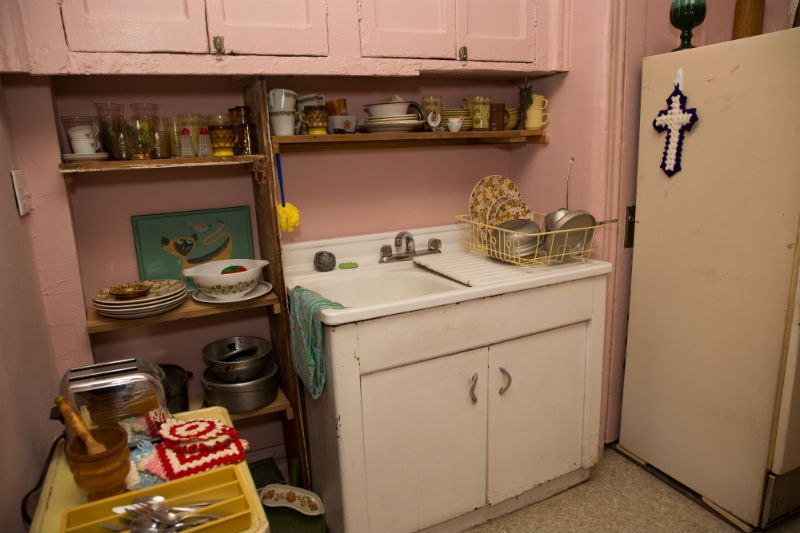
The Saez-Velez family kitchen. Photo courtesy of the Tenement Museum.
In the parlor, furnished with plastic-covered couches and a copy of the Sagrada Biblia, visitors learn more of the history of the Saez-Velez family, who kept strong ties to Puerto Rico during their lives in New York.
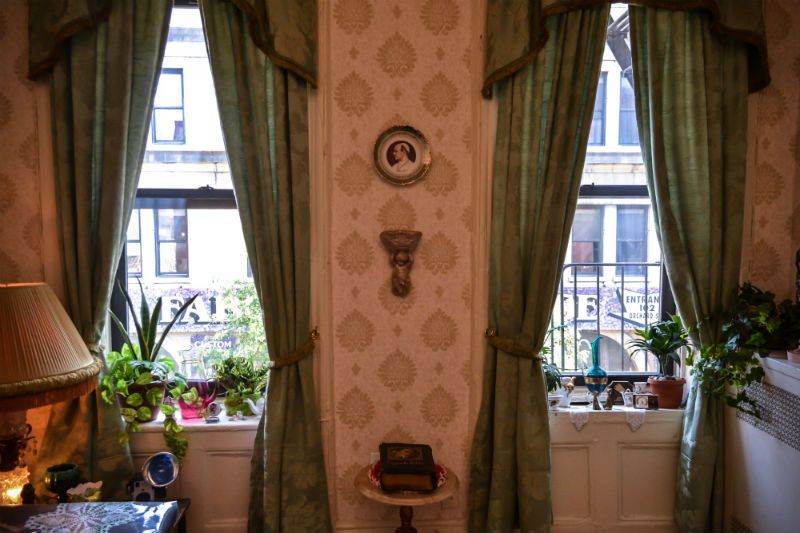
The Saez-Velez family parlor. Photo courtesy of the Tenement Museum.
Lastly, visitors learn the story of the Wong family as they enter their children’s bedroom. The Wongs moved to the U.S. from Hong Kong in 1968 after the passage of the Hart-Celler Act, which allowed immigration from Asia. Mrs. Wong worked in the garment industry in Chinatown and her membership in the International Ladies Garment Worker’s Union gave her benefits which allowed her to take care of her family and enabled her children to attend college.
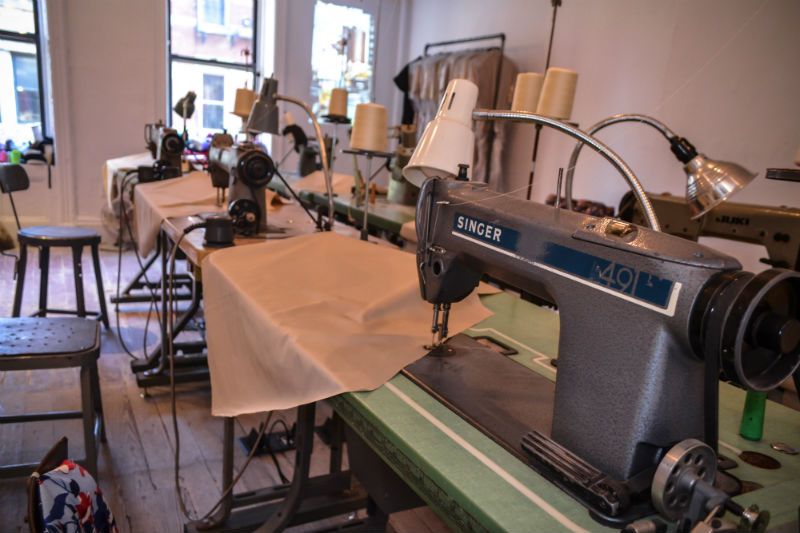
Sewing machines at the recreated Chinatown garment factory. Photo courtesy of the Tenement Museum.
The final stop of the exhibit is a recreated Chinatown garment factory, with interactive technology that allows visitors to watch videos by tapping the various sewing machines, where they watch stories of a workers strike, as well as tales of friendships forged in these factories.
For Annie Polland, Senior Vice President of Education and & Programs, the importance of the exhibition lies in telling these stories together. “Being American…is about learning how to live, work, and play with neighbors who come from other traditions and cultures, while also discovering the similarities that connect us,” she said.
Over its 127 year history, 103 Orchard Street has housed more than 10,000 people from all over the world. The Tenement Museum purchased the building in 2007, and opened its Visitor Center in 2011.
Visit the Tenement Museum this fall to get a full tour of the three families’ recreated apartments and hear the detailed stories of their experiences at 103 Orchard Street.
Next, check out 17 Art Installations and Exhibits in NYC Not to Miss in October and The Top 10 Secrets of NYC’s Lower East Side.
Subscribe to our newsletter